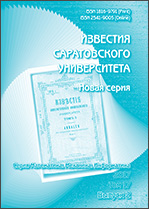|
This article is cited in 1 scientific paper (total in 1 paper)
Scientific Part
Mechanics
The effect of bubbles on the structure of flow and the friction in upward turbulent gas–liquid flow
B. A. Snigerev
Institute of Mechanics and Engineering, FRC Kazan Scientific Center of RAS, 2/31 Lobachevsky St., Kazan 420111, Russia
Abstract:
This paper presents the computational study results of the ascending gas-liquid flow local structure in a vertical pipe. The mathematical model is based on the use of two-fluid Eulerian approach taking into account the inverse influence of bubbles on averaged characteristics and turbulence of the carrying phase. The equations conservation of mass and momentum quantity of motion in the form of Navier – Stokes equations averaged over Reynolds for each phase are written down. For turbulent stresses the relations under the assumption of the Boussinesq hypothesis are written. Turbulent viscosity for the carrier liquid phase is determined using a two-parameter turbulence model modified for two-phase media. In the equations for transferring the kinetic energy of turbulence and its dissipation, additional terms for the kinetic energy, caused by pulsations of bubbles are introduced. As the main forces, the following components are considered: Archimedes force, resistance force, attachment force, Magnus rotational force, near-wall frictional force. To describe the bubble size distribution in a two-phase flow, an equation for preservation of the number of particles, taking into account the processes of coalescence and breakup is written. To solve the number of bubbles conservation equation, an approach based on the method of fractions is applied. The particle size distribution spectrum is divided into a number of fractions with fixed boundaries. It is assumed that bubbles can be exchanged between different fractions as a result of coalescence and breakups. In the framework of this method, the bubble size distribution is approximated by a piecewise equiprobable. Thus, the problem of describing the spectrum of drops by size reduces to the solution of equations for the volume concentrations of individual fractions. The effect of changes in the degree of dispersion of the gas phase volumetric gas flow rate, the velocity of the dispersed phase to the local structure and surface friction in a two-phase flow are numerically investigated. Comparison of the simulation results with experimental data showed that the developed approach allows to adequately describe turbulent gas-liquid flows in a wide range of gas content and initial bubble sizes.
Key words:
multi-phase flow, turbulence, Euler method, pressure drop.
Received: 07.07.2018
Revised: 11.11.2018
Accepted: 28.05.2019
Citation:
B. A. Snigerev, “The effect of bubbles on the structure of flow and the friction in upward turbulent gas–liquid flow”, Izv. Saratov Univ. Math. Mech. Inform., 19:2 (2019), 182–195
Linking options:
https://www.mathnet.ru/eng/isu799 https://www.mathnet.ru/eng/isu/v19/i2/p182
|

|




 Contact us:
Contact us: Terms of Use
Terms of Use
 Registration to the website
Registration to the website Logotypes
Logotypes








 Citation in format
Citation in format 
